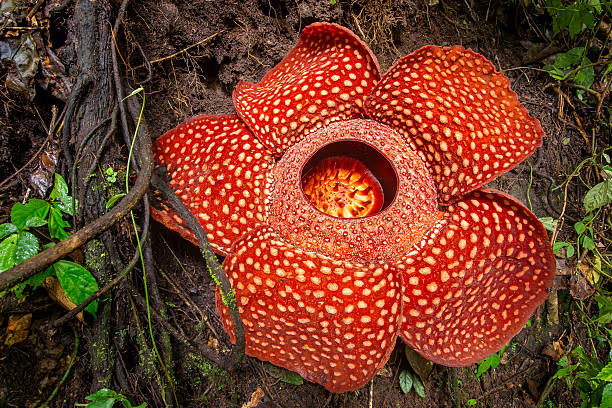< 1 mn read
- Size and Appearance: It is the largest flower in the world, reaching up to 3 feet in diameter and weighing as much as 15 pounds. Its appearance is quite striking with a large, fleshy bloom that can look rather rubbery.
- Odor: This giant flower is infamous for its powerful and unpleasant smell, which resembles rotting flesh or a decaying corpse. This stench is actually an adaptation to attract insects, such as carrion beetles and flies, that are drawn to decomposing matter.
- Photosynthesis: Unlike most plants, Rafflesia does not photosynthesize. Instead of leaves, stems, or roots, it relies on parasitism. It has thread-like structures that penetrate the tissues of tropical jungle vines to extract nutrients and water.
- Pollination: The foul odor and sticky substance secreted by the flower are key to its pollination process. The sticky substance adheres to the insects, which then transfer pollen to other flowers, facilitating reproduction.
- Conservation Status: Rafflesia arnoldii is facing significant threats, including deforestation, habitat destruction, and difficulties with insect pollination. Many species of Rafflesia are classified as critically endangered, endangered, or threatened due to the loss of their Southeast Asian forest habitats.
The Rafflesia arnoldii’s unique characteristics and its precarious conservation status make it a particularly intriguing subject of study in the plant world.

